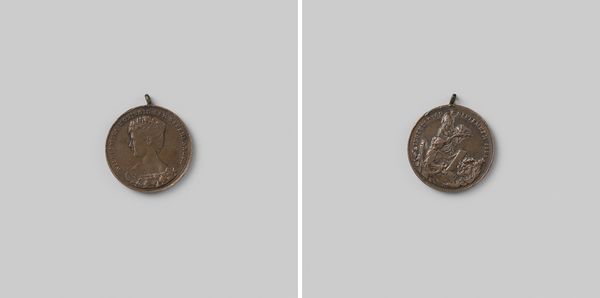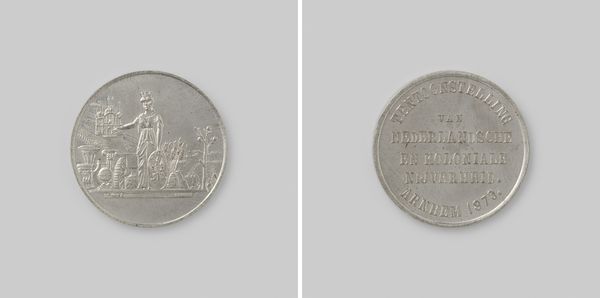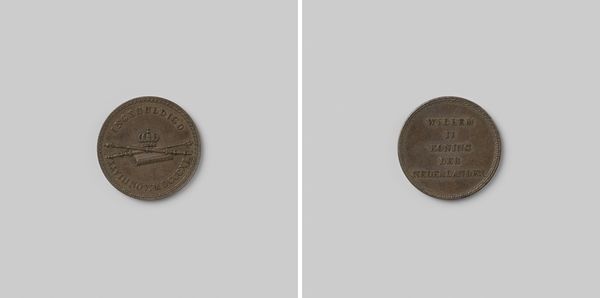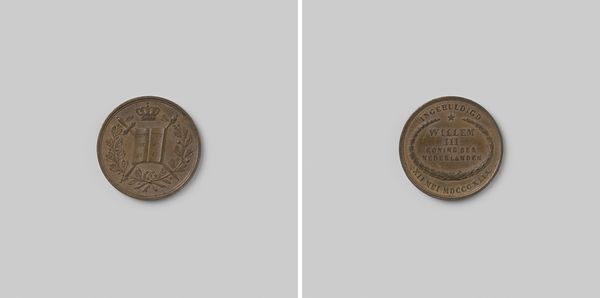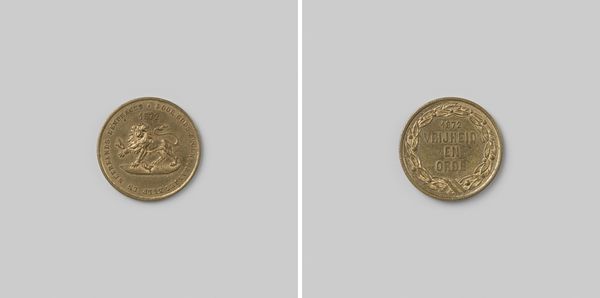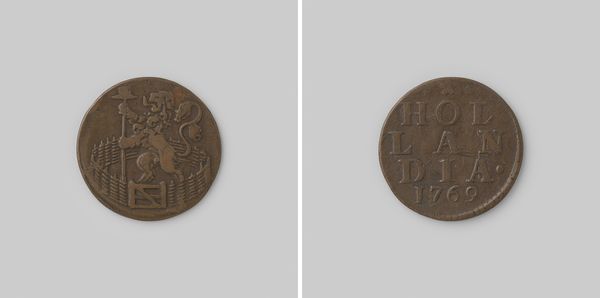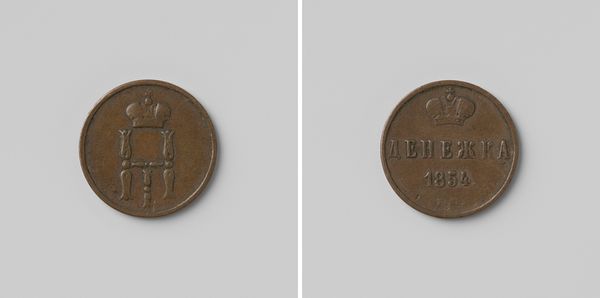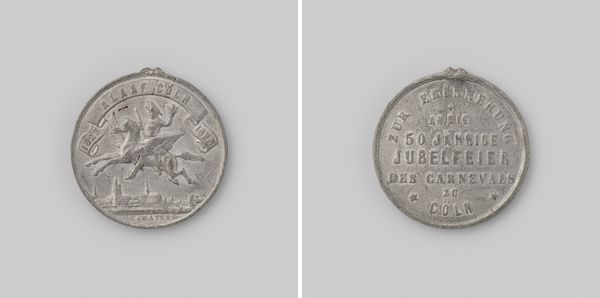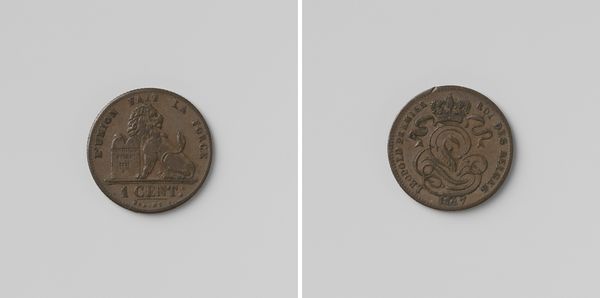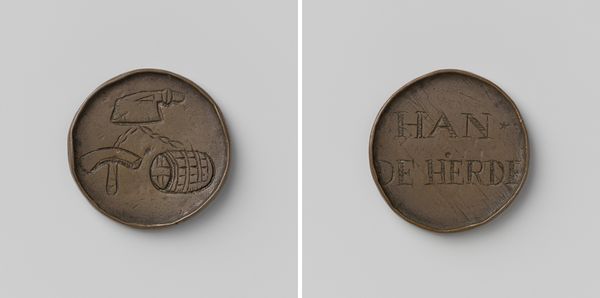
Hervormde Diakonie te Amsterdam, loodje geschonken aan nieuw aangekomen diakenen en diakenessen 1861
0:00
0:00
davidvander18041879kellen
Rijksmuseum
metal, sculpture
#
portrait
#
metal
#
sculpture
#
history-painting
#
academic-art
Dimensions: diameter 2.8 cm, weight 86 gr
Copyright: Rijks Museum: Open Domain
Curator: This striking metal token, entitled "Hervormde Diakonie te Amsterdam, loodje geschonken aan nieuw aangekomen diakenen en diakenessen," was crafted in 1861 by David van der Kellen. What is your immediate reaction to it? Editor: It feels... bureaucratic. Cold and formal, befitting the austere inscription around the figures. The metal itself conveys a sense of unyielding duty, doesn't it? Curator: Precisely. It served as an admittance token for new deacons and deaconesses in the Reformed Diaconal Office of Amsterdam. It speaks volumes about 19th-century Dutch social structures and the role of the church. The figures bear a subtle and powerful inscription denoting community assistance during that period. Editor: Tell me more about its structural elements, if you would? I see a seated female figure on one side; she appears to be enthroned? The reverse side is more abstract. Curator: Absolutely. The seated figure embodies the charitable nature of the commission, representing the personification of Amsterdam distributing bread, perhaps underscoring female involvement in the community, and the inscription details its intended use. While, on the reverse, two clasped hands under a pallium, symbolizing assistance to the poor and marginalized members of Amsterdam society. Editor: The hands clasped are such a visual encapsulation of their work. It's such an ingenious application of the metal material to such somber use. Curator: Indeed, it sheds light on a very particular societal welfare system predicated on faith. What strikes me is not only the religious obligations, but the acknowledgement of what seems to be gender balance in that particular Diakonie. Editor: On that somber note, it is something we might carry forward, and that might very well influence future community roles for everyone. Thanks for lending some important light here. Curator: My pleasure, as it is critical for the advancement of new theoretical interpretations.
Comments
No comments
Be the first to comment and join the conversation on the ultimate creative platform.
